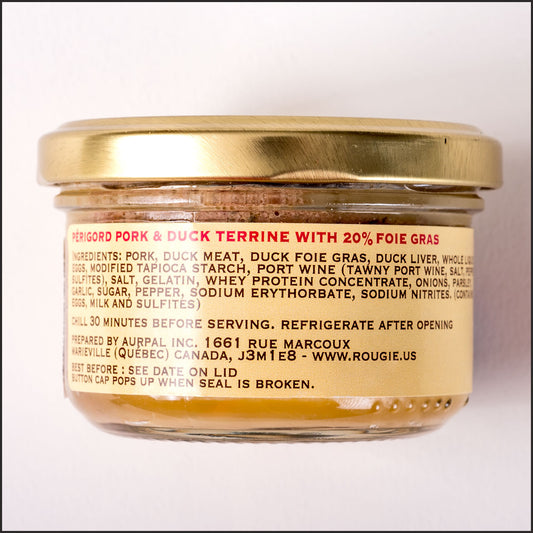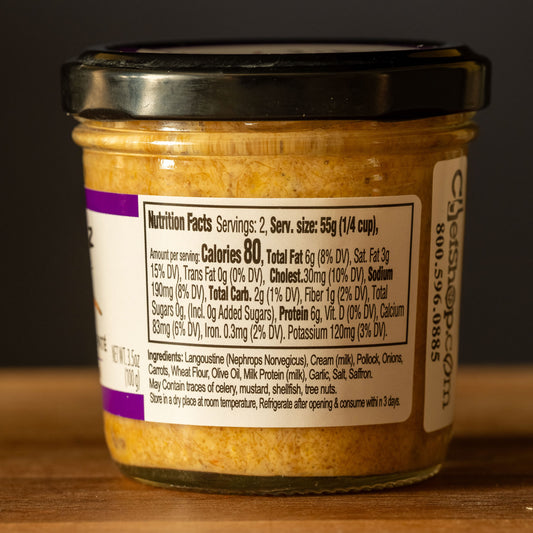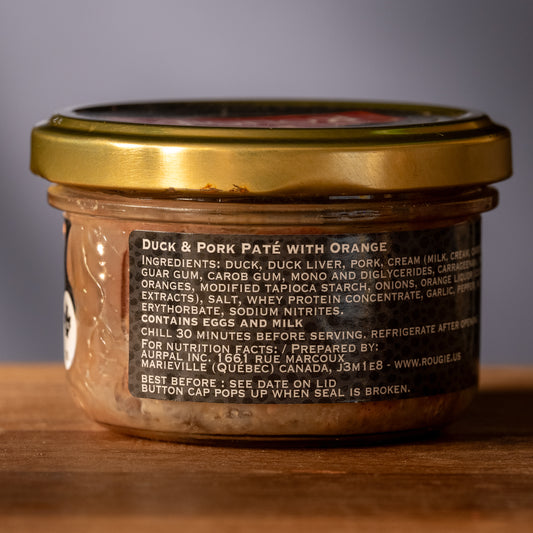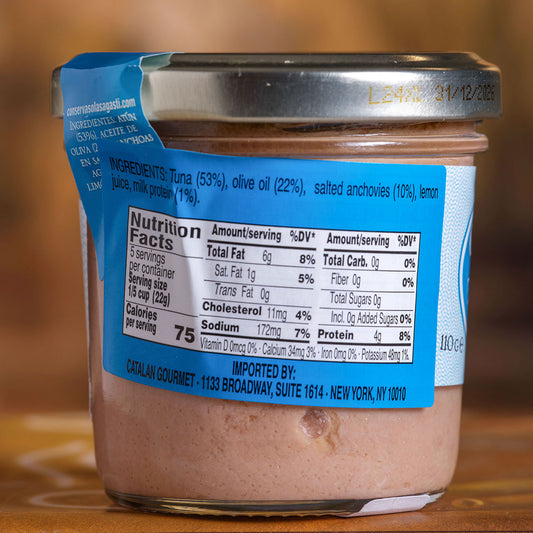Paté
about Paté: click here to read more
The Genuine Hénaff Pâté is sold by the million each year all around the world. This famous Pâté is made only with pork (96%) including hams and fillets, salt, spices and a fraction of sodium nitrite to keep its lovely pink color. Of course, to make the famous Hénaff Pâté it must be enhanced with the little secret “je ne sais quoi” which is a closely guarded Hénaff family secret. Made exclusively with fresh meat, did you know that the longer it stays in your pantry, the better it gets?
Paté is a dish with a long history that dates back to ancient times, evolving into the rich, flavorful spread we know today. The word "paté" comes from the French term pâté, which means "paste" or "dough," and it refers to a mixture of finely chopped or pureed ingredients—typically meat, liver, fat, and sometimes vegetables or spices—that is often served as a spread or filling. While paté is closely associated with French cuisine, its origins stretch further back and are influenced by various European cooking traditions.
The earliest versions of paté can be traced to ancient Rome, where a dish similar to what we consider paté was known as "isicia omentata"—a kind of meat paté made from minced meat, bread crumbs, wine, and spices, sometimes wrapped in fat. Roman cooks also made savory meat mixtures, similar to modern-day terrines and pâtés, by combining meats and fats.
The concept of paté evolved significantly during the Middle Ages, particularly in France. During this period, pâtés were often made from game meats such as venison, boar, or wildfowl, and would be encased in dough, making them resemble what we now call meat pies. These pies were served to nobility and royalty as luxurious, hearty dishes, often with intricate seasonings and sometimes filled with truffles, mushrooms, and other rich ingredients.
The modern version of paté, as we know it today, began to emerge during the 17th century in France. French cooks developed a technique of finely grinding or pureeing liver, particularly duck or goose liver, mixed with fat, herbs, and spices. The spreadable version of paté, using liver, became particularly popular in French cuisine by the 18th century. Foie gras, made from the fattened liver of geese or ducks, became a highly prized ingredient in the making of paté and remains a luxurious version of the dish to this day.
The first written recipes for paté appeared in cookbooks during the 18th century. One of the earliest mentions of a recipe similar to modern-day paté is in "Le Cuisinier François" (1651), written by the French chef François Pierre La Varenne, who is considered one of the founders of modern French cuisine. However, it was in French cookbooksof the 18th and 19th centuries that the art of making paté was more thoroughly documented, with different varieties and techniques emerging, from smooth liver-based spreads to coarser mixtures with chunks of meat or game.
Paté spread across Europe over the centuries, with different countries adapting the dish to their own culinary traditions. In England, for example, pâté de foie gras became popular among the aristocracy, while in Germany, a similar dish called Leberwurst (liver sausage) evolved.
By the 20th century, paté became more accessible to the broader public and evolved into many forms, including canned versions, which made it easier to store and serve.
-
Henaff Original Pork Pate
Regular price $10.95 USDRegular priceUnit price / per$0.00 USDSale price $10.95 USD -

 Restocking - choose Notify me
Restocking - choose Notify meRougie Pork and Duck Pate with 20 percent Foie Gras
Regular price $12.55 USDRegular priceUnit price / per$0.00 USDSale price $12.55 USDRestocking - choose Notify me -
Henaff Pork Rillettes Spread
Regular price $9.95 USDRegular priceUnit price / per$0.00 USDSale price $9.95 USD -
Rougie Duck and Pork Pate with Orange
Regular price $12.55 USDRegular priceUnit price / per$0.00 USDSale price $12.55 USD -

 Restocking - choose Notify me
Restocking - choose Notify meMatiz Langoustine Pate
Regular price $13.95 USDRegular priceUnit price / per$0.00 USDSale price $13.95 USDRestocking - choose Notify me -
Olasagasti Cantabrian Anchovy and Tuna Pate
Regular price $12.55 USDRegular priceUnit price / per$0.00 USDSale price $12.55 USD










